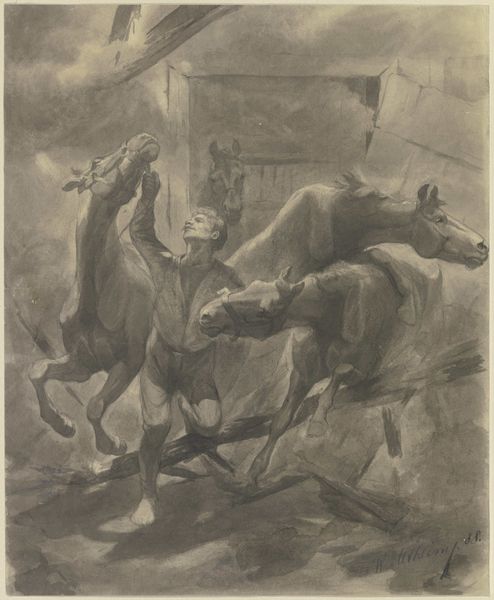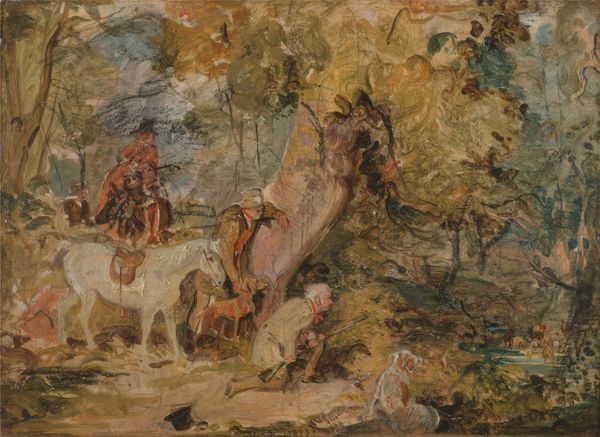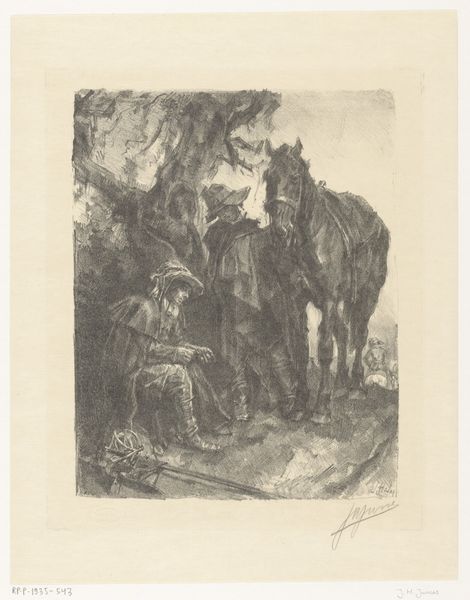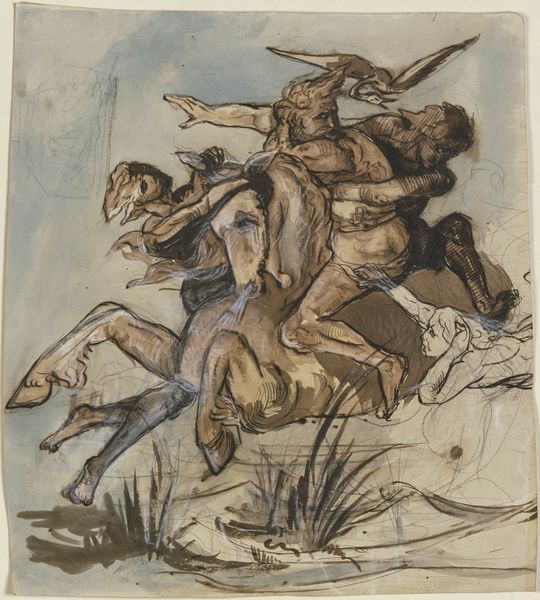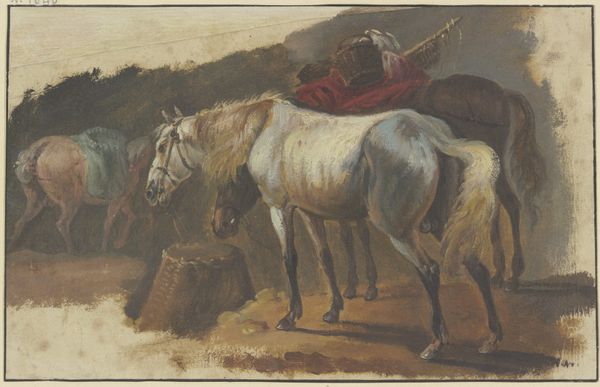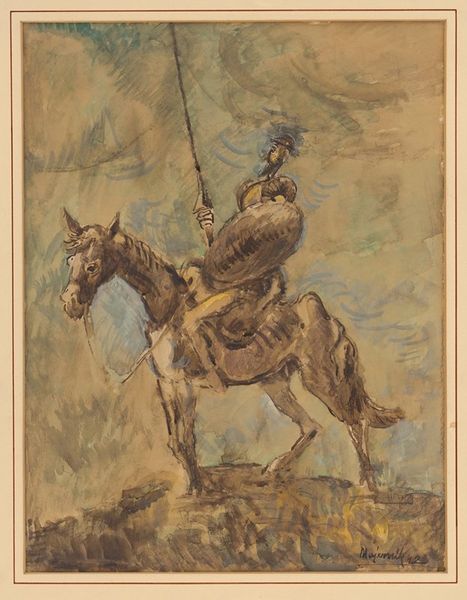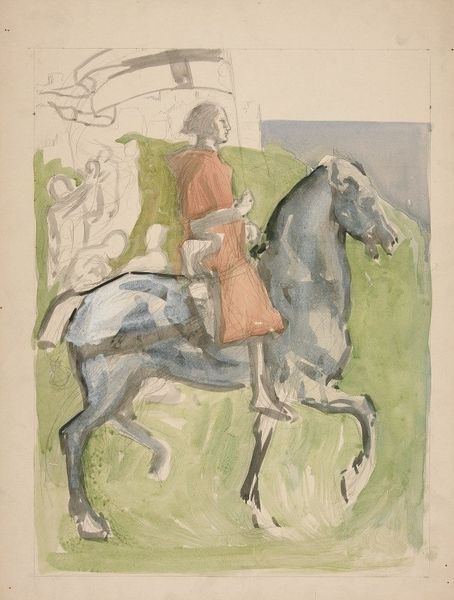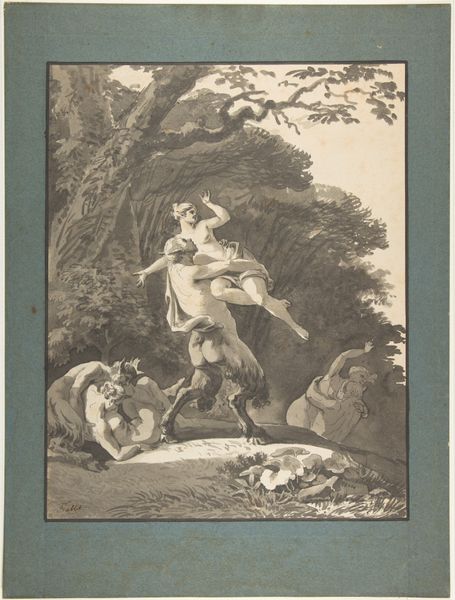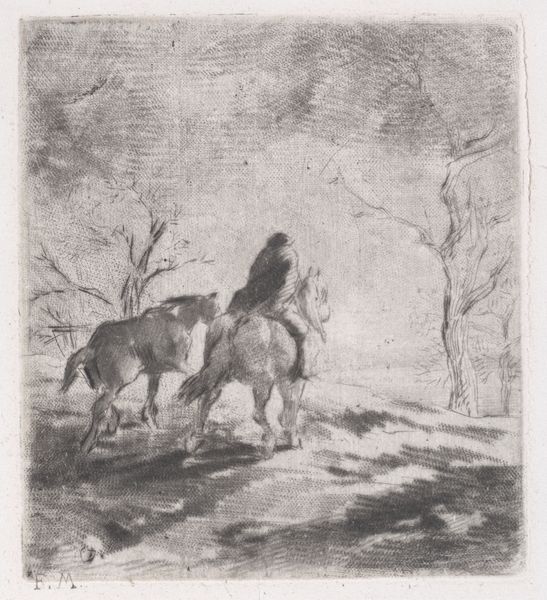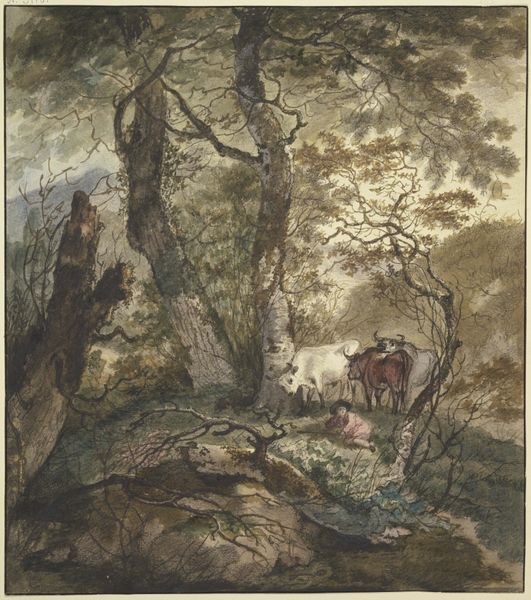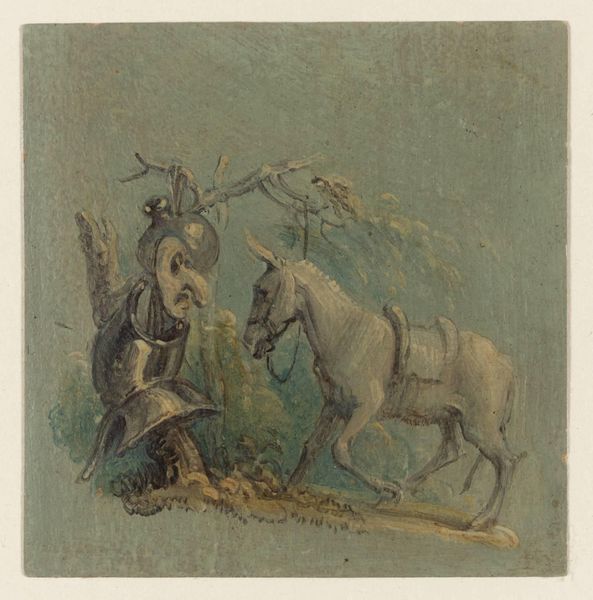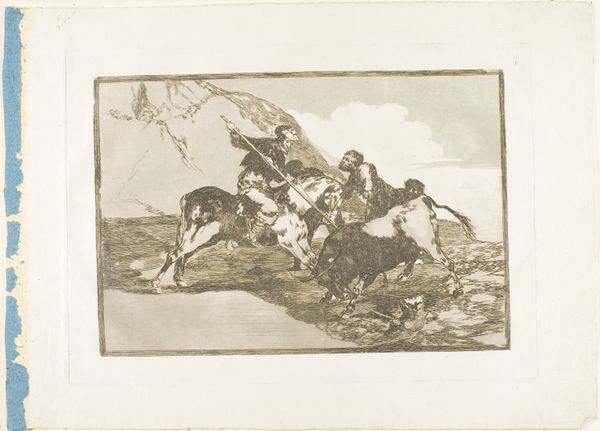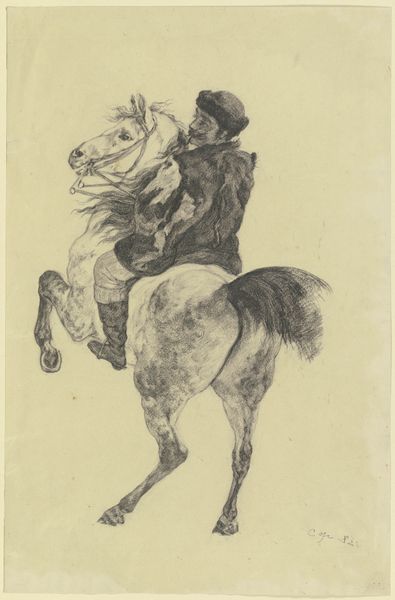
drawing, paper, watercolor
#
drawing
#
landscape
#
figuration
#
paper
#
watercolor
#
romanticism
#
genre-painting
Copyright: Public Domain
Curator: Here we have a watercolor drawing on paper titled "Genevieve" attributed to Rudolf Friedrich August Henneberg. It’s currently housed here at the Städel Museum. Editor: My first impression is of a frenetic energy barely contained within the gentle medium of watercolor. The whole scene feels unsettled. Curator: Yes, there is a palpable tension. The image portrays a dramatic rescue, drawing upon a specific narrative framework, perhaps a literary one. Consider the gendered dynamics in play here. A woman is in distress, a man intervenes on horseback... how do we unpack those power dynamics in the 19th century? Editor: The horse rearing like that is central to its symbolism, it always suggests virility and dominance. Look too, at how fair-skinned the woman and the horse are compared to the man and his steed. I can't help but interpret her paleness and the lightness of the stallion as indicators of purity. And what does it tell us that her dress shares its color with the skies and horizon? It is as if the drawing connects this protagonist to nature's most untouched, pristine elements. Curator: That’s an interesting reading, given the socio-political implications inherent in that idealization of womanhood. There’s an undeniable emphasis on feminine vulnerability being framed as delicate or “pure,” setting up a problematic dynamic. Is Henneberg commenting on this or perpetuating it? It is interesting that he refrains from explicitly framing Genevieve as “white,” thereby avoiding those implications... Or is he? Editor: Regardless of Henneberg’s conscious intent, his imagery certainly partakes in a visual tradition that perpetuates a series of symbolic shorthands. This extends to the animals, too: observe the protective posture of one dog while a fawn or baby deer frolics by, so vulnerable... Curator: Right, there are these cascading tiers of dependence and vulnerability that ripple outward from Genevieve herself, underlining the urgent need for intervention—and reinforcing a specific construction of male heroism. Editor: It shows us how visual culture reinforces those symbolic structures even when we are unaware, the visual tradition that grants symbols like the rearing steed such strong emotional weight over centuries and various cultural contexts. Curator: Analyzing this artwork really clarifies how art objects participate in larger societal narratives about gender, power, and agency, whether intentionally or not. Editor: For me, considering the symbolic density of what could simply be a historical snapshot reveals enduring ways of thinking about vulnerability and rescue.
Comments
No comments
Be the first to comment and join the conversation on the ultimate creative platform.
